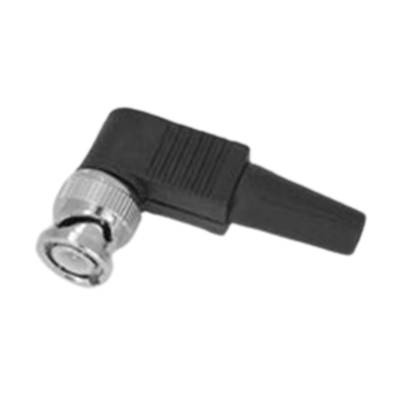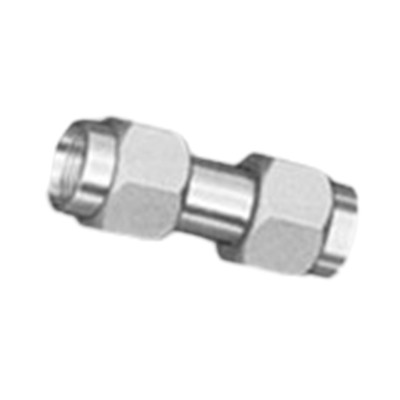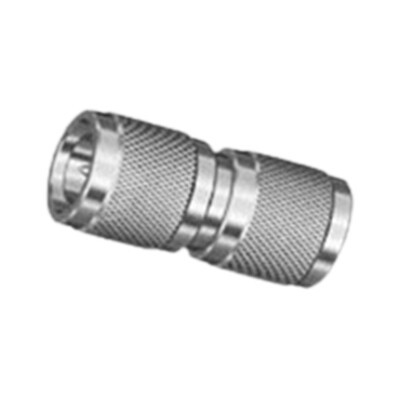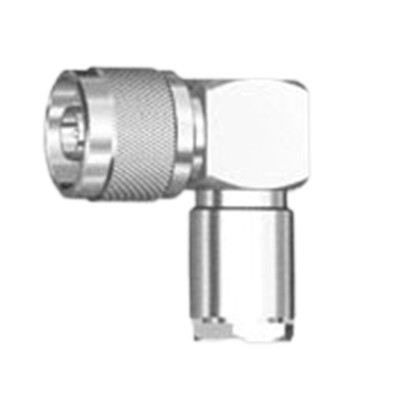
Introduction to RF Connectors
RF connectors, or RF radio connectors, are critical components in any system that requires the transmission of high-frequency signals. These connectors are designed to maintain signal integrity, ensuring minimal loss or interference during transmission. From communication systems and wireless networks to broadcasting equipment and satellite systems, RF connectors play an essential role in the seamless operation of devices that rely on RF signals.
In this article, we will explore the various Types of RF connectors, their characteristics, applications, and considerations for selecting the right one based on your needs.
Key Characteristics of RF Connectors
When choosing RF connectors, several critical characteristics influence their performance and suitability for different applications:
Frequency Range: Different RF connectors support varying frequency ranges, typically from a few megahertz (MHz) to several gigahertz (GHz). The frequency range is a crucial factor when selecting connectors for specific applications like microwave communication or TV broadcasting.
Impedance Matching: Maintaining the correct impedance (usually 50 or 75 ohms) is essential for minimizing signal reflection and power loss. Many RF connectors are designed to ensure perfect impedance matching with the cables and devices they connect.
Power Handling: Some RF connectors are designed to handle higher power levels, particularly in applications like radio transmitters and broadcast systems, where power transmission is crucial.
Durability and Environmental Factors: RF connectors used in outdoor systems must be durable, resistant to environmental factors like moisture, dust, and extreme temperatures. Many connectors are specifically designed for rugged environments.
Right Angle BNC Male RF Coaxial Connector for RG-58/U Cable XMR-BNC0010
Common Types of RF Connectors
RF connectors come in a variety of types, each suited for different applications, based on their design and performance characteristics. Here's a breakdown of the most commonly used RF connectors:
BNC Connectors
BNC (Bayonet Neill-Concelman) connectors are among the most recognizable RF connectors due to their wide use in low-frequency applications. They feature a quick connect/disconnect mechanism, making them user-friendly in applications where speed is important.
- Applications: BNC connectors are often used in CCTV systems, test equipment, and low-power video transmission.
- Pros: They are affordable and easy to use.
- Cons: BNC connectors are not well-suited for high-frequency applications, as they struggle to maintain performance above 4 GHz.
SMA RF Connectors
The SMA RF Connector is a high-performance connector designed for higher frequency applications, typically up to 18 GHz, but some specialized versions can handle even higher frequencies.
- Applications: Commonly found in wireless communication systems, antennas, and cellular networks.
- Pros: SMA connectors offer excellent performance in high-frequency environments.
Cons: They are more delicate compared to some other connectors, requiring careful handling.
Double SMA Male Coaxial Connector XMR-SMA3080
N-Type Connectors
N-Type connectors are medium-sized connectors that provide excellent performance at frequencies up to 11 GHz. Their robust design makes them ideal for outdoor and high-power applications.
- Applications: N-Type connectors are often used in radio transmission, cellular base stations, and microwave communication systems.
- Pros: Waterproof and highly durable, suitable for outdoor use.
- Cons: Larger in size compared to connectors like SMA, making them less ideal for space-constrained applications.
TNC Connectors
TNC (Threaded Neill-Concelman) connectors are similar to BNC connectors but feature a threaded coupling mechanism, which provides better performance at higher frequencies and in more rugged environments.
- Applications: TNC connectors are used in marine, aerospace, and outdoor wireless systems.
- Pros: More secure and better at handling higher frequencies than BNC connectors.
Cons: They are slightly more expensive than BNC connectors.
Double TNC Female RF Coaxial Adapter XMR-TNC5010
MCX and MMCX Connectors
MCX and MMCX connectors are miniaturized RF connectors used in applications where space-saving is critical, such as mobile devices and GPS systems. They offer good performance at frequencies up to 6 GHz.
- Applications: Commonly used in GPS receivers, cellular modems, and other compact RF devices.
- Pros: Compact and lightweight.
- Cons: Their small size makes them less durable than larger connectors.
UHF Connectors
UHF connectors are designed for lower frequency applications and have been in use since the early days of radio transmission.
- Applications: UHF connectors are primarily used in TV and radio broadcasting equipment.
- Pros: Affordable and easy to use.
Cons: Poor performance at frequencies above 300 MHz, making them unsuitable for modern high-frequency applications.
F-Type Connectors
F-Type connectors are commonly used in cable television systems and satellite receivers. Their threaded design ensures a secure connection.
- Applications: Widely used in residential cable TV, satellite, and internet systems.
- Pros: Cost-effective and reliable for domestic applications.
- Cons: Limited to lower frequencies, typically below 1 GHz.
QMA Connectors
QMA connectors are a quick-disconnect variant of the SMA connector, offering the same high-frequency performance with a more convenient coupling mechanism.
- Applications: Ideal for cellular communication systems where frequent disconnection may be required.
- Pros: Fast installation and removal without tools.
- Cons: Slightly bulkier than traditional SMA connectors.
Specialized RF Connectors
In addition to the more common RF connectors, there are specialized types designed for very specific environments and performance requirements.
7/16 DIN Connectors
7/16 DIN connectors are high-power RF connectors designed for use in telecom systems. They provide excellent performance in harsh environments, making them ideal for outdoor installations.
- Applications: Telecommunications, broadcast towers, and high-power antenna systems.
- Pros: Rugged design and high power handling capability.
- Cons: Bulkier than most connectors, making them unsuitable for compact devices.
SMP Connectors
SMP (SubMiniature Push-On) connectors are used in high-density and high-frequency applications, particularly in military and aerospace systems. They provide superior performance in environments where space and weight are at a premium.
- Applications: Aerospace, military radar, and high-frequency communication systems.
- Pros: Compact and lightweight, offering excellent high-frequency performance.
- Cons: More expensive and less durable than larger connectors.
Choosing the Right RF Connector for Your Needs
When selecting an RF connector, consider the following factors:
- Frequency Range: Ensure that the connector supports the frequency range required for your application.
- Environmental Conditions: For outdoor applications, choose connectors designed to withstand harsh environmental conditions.
- Size Constraints: In compact devices, miniaturized connectors like MCX or SMP may be necessary.
N Plug Crimp RF Connector for RG-213/U Coaxial Cable XMR-N5050
Proper Installation and Maintenance of RF Connectors
To ensure reliable performance and longevity of RF connectors, follow these installation and maintenance tips:
- Proper Installation: Make sure connectors are securely fastened to avoid signal loss. Use the appropriate torque for threaded connectors.
- Routine Maintenance: Regularly inspect connectors for wear, corrosion, or debris, especially in outdoor installations.
- Avoiding Mistakes: Ensure correct impedance matching between the connector and cable to prevent signal degradation.
Future Trends in RF Connector Technology
As the demand for higher bandwidth and miniaturized devices grows, RF connectors continue to evolve:
- Miniaturization: Connectors are becoming smaller while maintaining high-frequency performance, meeting the needs of mobile and IoT devices.
- Higher Bandwidth: Future RF connectors will be designed to support even higher data rates and frequencies, essential for next-generation wireless communication systems.
- Durability Innovations: Advances in materials science are improving the durability and reliability of RF connectors, especially in harsh environments.
Frequently Asked Questions (FAQs)
What are RF connectors? RF connectors are electrical connectors used to transmit radio frequency signals in devices such as antennas, transmitters, and receivers.
How do I choose the best RF connector? Consider the frequency range, impedance, power requirements, and environmental factors specific to your application.
What is the difference between SMA and BNC connectors? SMA connectors are suited for higher-frequency applications, while BNC connectors are used for lower-frequency tasks like video and CCTV.
Can RF connectors be used in outdoor systems? Yes, connectors like N-Type and 7/16 DIN are designed for outdoor use, offering waterproofing and durability.
What are high-frequency RF connectors? High-frequency RF connectors, like SMA and SMP, are designed to work efficiently in gigahertz-range applications, such as telecommunications and radar.
How do I maintain RF connectors? Routine cleaning, proper installation, and regular inspection for wear and tear will help maintain optimal performance.
Conclusion
RF connectors are essential in ensuring the effective transmission of radio frequency signals across various applications, from telecommunications to broadcasting. By understanding the different types of RF connectors and their unique characteristics, you can make informed decisions when selecting connectors for your specific needs. Proper installation and maintenance will ensure these connectors perform reliably, contributing to the overall success of your RF communication systems.
Related Articles
- A Comprehensive Guide to Coaxial RF Connectors2025-01-08
- Custom Antenna Design for High-Performance Wireless Systems2024-12-24
- Understanding RFID Antenna and VHF/UHF Antenna: Functions, Types, and Benefits2024-12-17
- Choosing the Best LoRa Antenna for Your IoT Applications2024-12-11
- 10 Key Factors to Consider When Choosing an RF Connector2024-12-05
Contact us with the RF and Microwave coaxial connectors, RF cable assemblies and Antennas.
Get A Quote

XIAOMA is a supplier specializing in the R&D and manufacturing of RF CONNECTORS,CABLE ASSEMBLY AND ANTENNAS products. It also provides one-stop radio frequency solutions for electronic equipment. XIAOMA Technology's products are widely used in consumer electronics, communication equipment and infrastructure, mobile terminals and automotive electronics.
Contact Info
Contact Person : Rick, Haifa
Wechat / WhatsApp: + 86 18651023520
Follow
Share
Download after filling out the form



